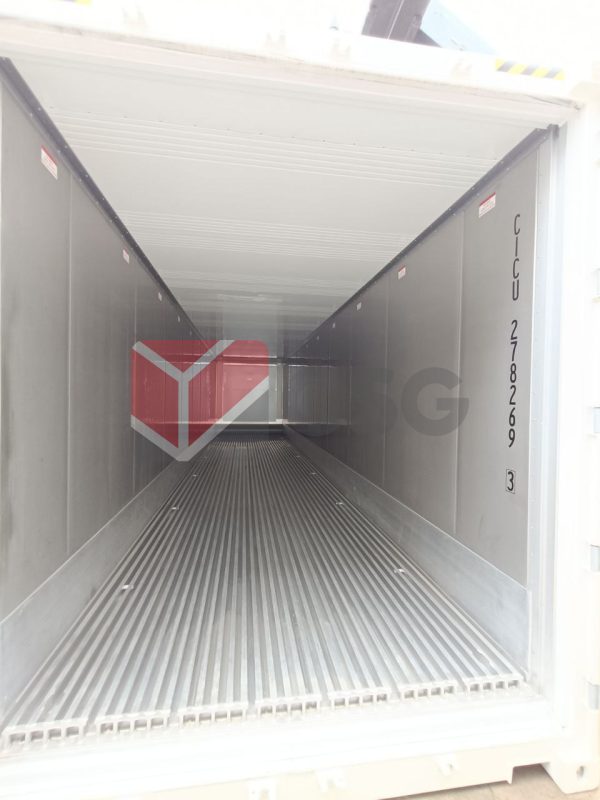The Environmental Impact of Shipping Containers: Sustainability Insights

Shipping containers are often hailed as symbols of efficiency and modern logistics, transporting goods across the globe with remarkable ease. However, their environmental impact, both positive and negative, is worth examining to fully understand their role in sustainability. This article delves into the environmental footprint of shipping containers and explores how their use intersects with sustainability goals.
The Lifecycle of Shipping Containers
Shipping containers have a relatively straightforward lifecycle. Initially, they are manufactured from steel or aluminum, materials known for their durability and strength. The production of these metals, however, involves significant energy consumption and carbon emissions. The environmental impact of this stage is not negligible. Steel production, for instance, is a major source of industrial CO2 emissions.
Once manufactured, containers are utilized for transportation, and their durability becomes a major asset. These containers are designed to withstand harsh conditions and have a long operational lifespan, often exceeding 20 years. This longevity means that the containers are used repeatedly, reducing the need for new ones and mitigating some environmental impacts associated with production.
The Benefits of Reuse and Repurposing
One of the most significant environmental benefits of shipping containers is their potential for reuse and repurposing. Containers that have reached the end of their initial transportation lifecycle are increasingly being transformed into various types of structures, including offices, homes, and even agricultural facilities. This reuse reduces the demand for new building materials and minimizes waste.
Container homes and offices, for example, can be constructed with a relatively low environmental footprint compared to traditional building methods. The repurposing of containers helps mitigate issues related to construction waste and reduces the need for new resources, aligning with sustainable building practices. Additionally, the modular nature of containers allows for flexible, scalable solutions in construction, further promoting efficient use of resources.
Energy Efficiency and Insulation Challenges
While repurposing containers is beneficial, it is not without challenges. One significant issue is the insulation of these structures. Containers are designed to be airtight, which is excellent for transportation but can create problems in residential or office settings. In hot climates, containers can become excessively warm, while in colder climates, they may not retain heat effectively. Addressing these insulation challenges often requires additional materials and energy, which can offset some of the sustainability gains.
Innovative solutions are emerging to address these challenges. For example, modern techniques such as spray foam insulation and reflective coatings are being used to enhance the energy efficiency of container-based structures. These advancements aim to reduce the energy consumption required for heating and cooling, further aligning container use with sustainability goals.
End-of-Life Considerations
At the end of their lifecycle, shipping containers also present environmental challenges. While they are durable, they do eventually reach a point where they are no longer usable. Proper disposal or recycling is crucial to minimize environmental impact. Fortunately, many components of shipping containers can be recycled. Steel, for example, is highly recyclable and can be repurposed for new products, reducing the need for raw material extraction.
Efforts to enhance the recyclability of containers are ongoing. Some companies are working on improving the design of containers to facilitate easier disassembly and recycling, thereby reducing their end-of-life impact. Additionally, promoting practices such as repurposing and refurbishing can extend the lifespan of containers and minimize waste.
Sustainability in the Shipping Industry
The shipping industry itself is working towards reducing its environmental impact. Innovations in fuel technology, such as the use of low-sulfur fuels and alternative energy sources like wind and solar, are being explored to reduce emissions from shipping vessels. These advancements can contribute to a more sustainable lifecycle for shipping containers.
Moreover, the adoption of digital technologies and logistics optimization can lead to more efficient use of shipping containers, reducing the overall number required and minimizing their environmental footprint.
Conclusion
Shipping containers have a complex environmental impact that reflects their role as both a tool for efficient global trade and a potential asset in sustainable construction. While their production and eventual disposal pose challenges, the benefits of reuse, repurposing, and recycling contribute significantly to sustainability efforts. Innovations in insulation, recycling practices, and the broader shipping industry’s shift towards greener technologies further enhance the environmental credentials of shipping containers. By understanding and addressing both the positive and negative aspects of their environmental impact, we can better leverage these versatile structures in our pursuit of a more sustainable future.
 Singapore
Singapore Australia
Australia Indonesia
Indonesia Japan
Japan Malaysia
Malaysia New Zealand
New Zealand Philippines
Philippines South Korea
South Korea Taiwan
Taiwan Thailand
Thailand VIETNAM
VIETNAM
